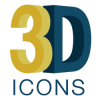February 2012 (36 months)
3D-ICONS proposes to digitize a series of architectural and archaeological masterpieces of world and European cultural significance and provide 3D models and related digital content to Europeana, with the aim of contributing to the critical mass of highly engaging content available to users. Public fascination with the architectural and archaeological heritage is well known, it is proven to be one of the main reasons for tourism according to the UN World Tourism Organisation. Historic buildings and archaeological monuments form a significant component Europe’s cultural heritage, they are the physical testimonies of European history and of the different events that led to the creation of the European landscape, as we know it today. The project will exploit existing tools and methods, to integrate them in a complete supply chain of 3D digitization to contribute a significant mass of 3D content to Europeana. The project will focus on UNESCO World Heritage monuments and other monuments of outstanding value at European level, to illustrate a particular strand of Europe’s history. The digital content will include overall 3D models and reconstructions, enlarged models of important details, images, texts, videos. It will also include and re-contextualize in 3D, objects belonging to a monument but presently located elsewhere, for example in a museum. The project’s activities will include both new digitization as well as the conversion of some existing 3D data into formats which are accessible for Europeana users. The project’s anticipated impact is making accessible through Europeana an unprecedented quantity of high-quality, 3D, well-organized and attractive information about the masterpieces of European architecture and archaeology.
Funded under: CIP-ICT-PSP.2011.2.2








